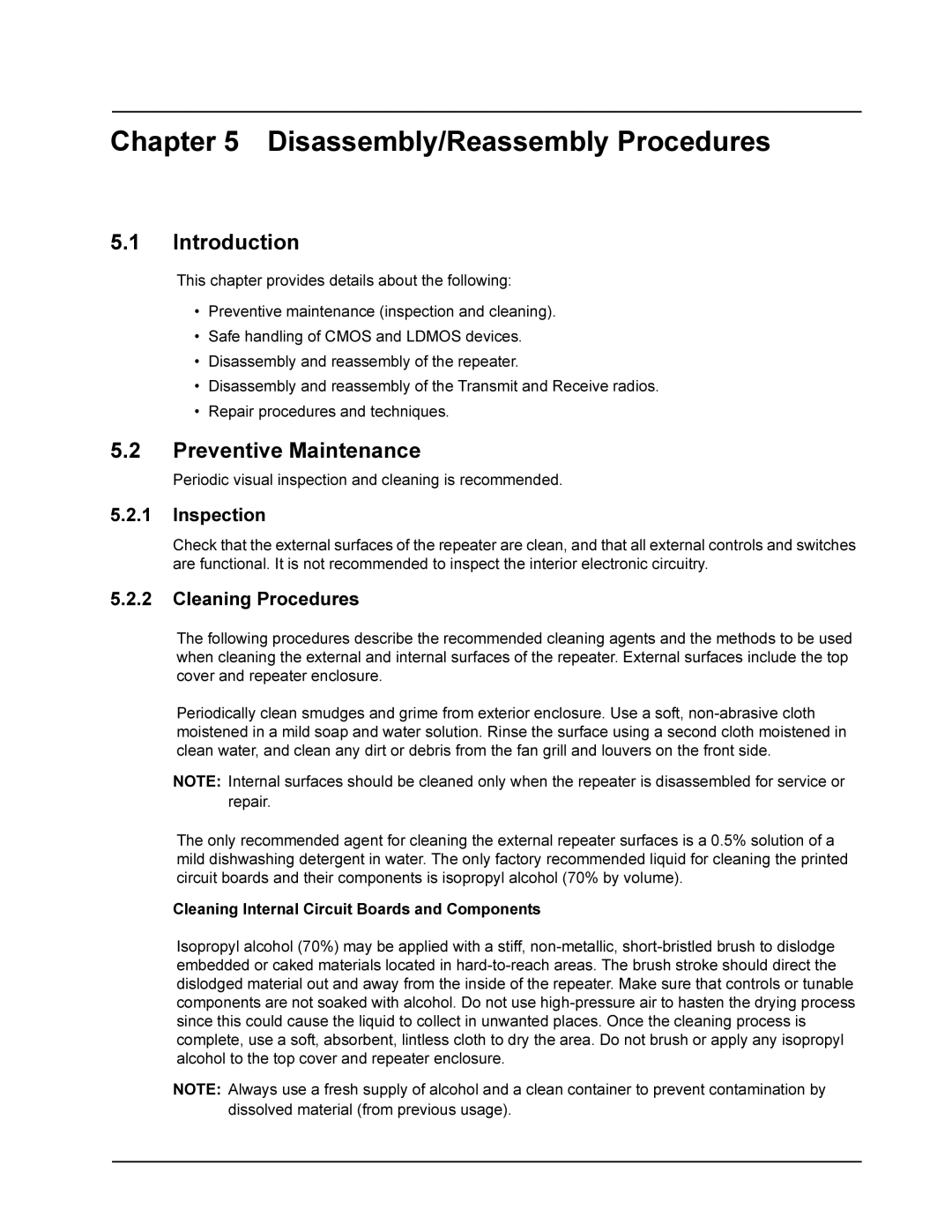
Chapter 5 Disassembly/Reassembly Procedures
5.1Introduction
This chapter provides details about the following:
•Preventive maintenance (inspection and cleaning).
•Safe handling of CMOS and LDMOS devices.
•Disassembly and reassembly of the repeater.
•Disassembly and reassembly of the Transmit and Receive radios.
•Repair procedures and techniques.
5.2Preventive Maintenance
Periodic visual inspection and cleaning is recommended.
5.2.1Inspection
Check that the external surfaces of the repeater are clean, and that all external controls and switches are functional. It is not recommended to inspect the interior electronic circuitry.
5.2.2Cleaning Procedures
The following procedures describe the recommended cleaning agents and the methods to be used when cleaning the external and internal surfaces of the repeater. External surfaces include the top cover and repeater enclosure.
Periodically clean smudges and grime from exterior enclosure. Use a soft,
NOTE: Internal surfaces should be cleaned only when the repeater is disassembled for service or repair.
The only recommended agent for cleaning the external repeater surfaces is a 0.5% solution of a mild dishwashing detergent in water. The only factory recommended liquid for cleaning the printed circuit boards and their components is isopropyl alcohol (70% by volume).
Cleaning Internal Circuit Boards and Components
Isopropyl alcohol (70%) may be applied with a stiff,
NOTE: Always use a fresh supply of alcohol and a clean container to prevent contamination by dissolved material (from previous usage).
